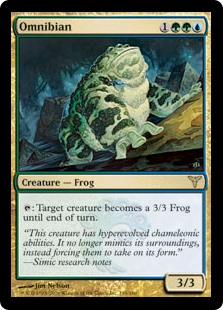No one denies that Magic is a complex game. Most players tend to take the majority of the core game concepts and turn structure for granted once they’ve become familiarized, but ask anyone trying to pick it up for the first time if they feel there’s a high barrier to entry and you’re bound to get a very common response.
This isn’t inherently the game’s fault. Magic for the most part has always had this issue. Between the bevy of rules interactions, depth of strategic possibility, and continually growing pool of cards to encounter – not to mention learning and processing how to build a customized deck on top of it all – Magic has been complicated from the start. Despite numerous attempts to create products and avenues to make the process easier (to varying degrees of success), an uphill learning curve is simply a facet of the game’s identity.
The fact that the nuances of the game has continually sprawled further over the course of 25 years hardly makes the task of picking it up any easier.
That said, for the literal dozens of pages of that make up Magic’s Comprehensive Rulebook, the vast majority of the time players only contend with a small portion of it. Only when you start dealing with corner case issues or strange and / or archaic card interactions do some the game’s less common attributes come to the forefront. Most of the time a typical game isn’t going to be worrying about things such as timestamps, dependency, or manipulating the stack, and even then they’re more likely to arise in older or casual formats such as EDH.
The layer system is another such rules subset. This is an aspect of the rules that determines the order of how certain card interactions resolve, such as whether a new permanent with variable characteristics should establish its color or type first, and exactly what its power and toughness may be when it hits the battlefield.
The layer system is intricate in and of itself, and it’s an integral part of ensuring things are working behind the scenes. Yet while its function hasn’t diminished over the years, it’s become something that players have needed to reference less and less over time. Part of this is because the designers have simply learned how to avoid creating too many cards at the same time whose interactions would necessitate it.
More importantly, it’s because a number of years ago R&D streamlined the most commonly referenced part of the layer system: how to determine a creature’s power and toughness when multiple effects are acting on it. Namely, when something wanted to alter/change/set a power and toughness. Between temporary buffs, permanent buffs, +1/+1 counters, and so on, there was a lengthy period of time when confusion over the order of operations was rife when wielding a Serendib Sorceress, Ovinize, or if your friends really hated you, Humility.
Thankfully, such interactions nowadays are much more intuitive. To a point where the majority of the time if you’re going to use something that sets a creature’s stats, all you have to remember is that it only affects the printed card. Everything else is still added or subtracted afterwards.
To that end, this week’s card celebrates this upgrade in efficiency by turning to one of the more amusing cards that mucks with creature size.
Today we have: Omnibian

Name: Omnibian
Edition: Dissension
Rarity: Rare
Focus: Creature Modification
Highlights: Just like all of the cards in its category, Omnibian allows you to modify a creature’s size upon activation. In this case, it will turn whatever creature you target into a 3/3 Frog until end of turn. This can be incredibly advantageous if used correctly, but what makes this particular version somewhat unique is that it actually has the potential to make the affected creature larger than before.
Nearly every other card that sets a creature’s power and toughness makes them quite tiny. (0/1s, 0/2s, 1/1s, and so on.) Omnibian, however, turns that creature into a 3/3 instead. Normally this will still have the same effect in the end, such as shrinking a massive creature trying to attack you or someone else down to a much more manageable size – especially for a Commander setting. Occasionally though, this freaky froggy could permit you to boost something like a token or utility creature up to a 3/3 instead, which could help to stave off something dying to minor damage or turning it into a more worthwhile blocker. This makes it quite useful when it comes to table politics. In addition, unlike most of the other creature iterations that alter power and toughness, Omnibian itself is on a heftier 3/3 frame, ensuring it too can’t be simply shocked into the graveyard.
This sizable amphibian does come with two limitations though. The first is one it shares with some of its older brethren such as the Serendibs in that unlike the spell-based versions of the effect, Omnibian doesn’t strip away any abilities of the creature. Instead, it merely turns the base card into a 3/3. The second is that like all cards of this kind, it will only affect the printed card size. If the problematic creature you’re trying to affect is sporting a bunch of Auras or +1/+1 counters (admittedly more common nowadays than in the past), its influence as an ability will be severely diminished.
And hey, at least we can thank the layer system for making it much easier to understand than it was many years ago, proving that rules don’t always have to get more complicated over time – even if the game doesn’t get any less complex.
Keep an eye out for us to be regularly featuring other more accessible-but-worth-it Commander cards going forward. In the meantime, we’ll keep the light on for you.
![]()
You can discuss this article over on our social media!
